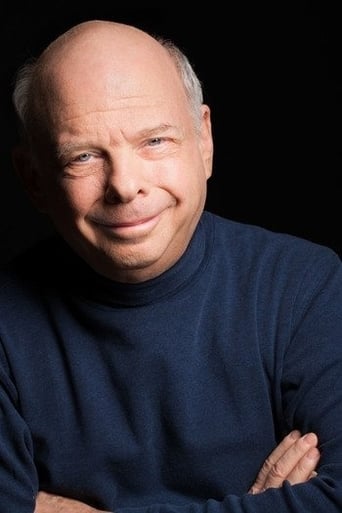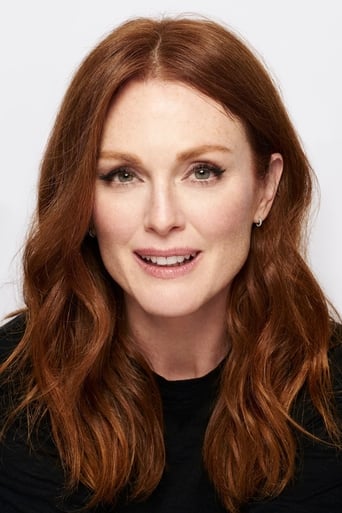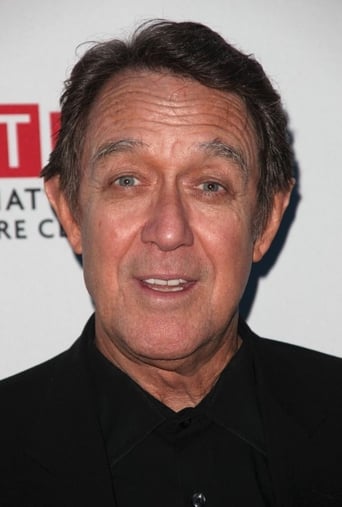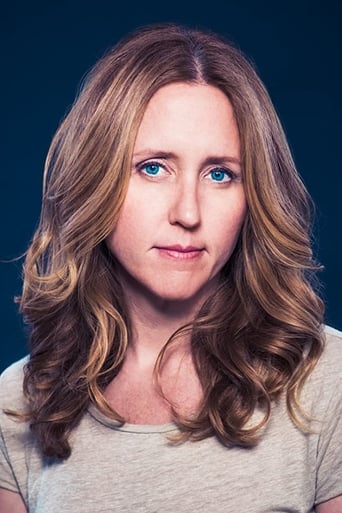NekoHomey
Purely Joyful Movie!
Dorathen
Better Late Then Never
SparkMore
n my opinion it was a great movie with some interesting elements, even though having some plot holes and the ending probably was just too messy and crammed together, but still fun to watch and not your casual movie that is similar to all other ones.
Billie Morin
This movie feels like it was made purely to piss off people who want good shows
tenebrisis
If you aren't willing to sit through Chekov, stay away but otherwise, find this and feast!! It is so moving and wondrous. Beautiful performances abound and it is just terrific. I watched it after reacquainting myself with My Dinner With Andre. Tremendously moving and touching. So thrilled to own it and to be able to dive back in now and again and experience the work of gifted and deep people doing something beautiful and rich. Magnificent. Highly recommended! Wallace is just miraculous as is everyone else. This is what artistic work is about. Everybody in the arts wants to make a Citizen Kane and a Sgt. Peppers, a Le Sacre Du Printemps and a West Side Story, a Sweeney Todd and an Angels In America. Andre Gregory's direction and goal seems to be to find a level of communication and depth in the work that is both heightened and yet ultra realistic at the same time; in the end analysis the film therefore is affecting in a way that many productions aren't. He achieves this by working on a smaller scale yet allowing the actors all the room they need to get big when the play demands it. It reminds anyone involved in the arts that the process is everything. Doing good work with all your heart, mind and soul down to the smallest detail is all we can ask of ourselves. Within that there will be artists able to push through and be a part of something transcendent. This film is a lost gem. It didn't and it won't make a big noise. It doesn't matter, it has everything it needs to have to remind anyone who is able to take it in what the arts are all about, especially the theatrical arts. Forgive the sermon. Watch it.
Parker Lewis
George Gaynes has a serious role in this excellent feature, and this was produced 10 years after he gained newfound fame as Commander Lassard in the first Police Academy movie believe it or not.Vanya on 42nd Street deserves way more recognition. It's innovative, bold, and the performance is seamless with the audience watching. I have to get my hands on the criterion collection DVD, because there's so much I want to learn about the behind-the-scenes of this fine movie.The movie also featured Brooke Smith, who only three years earlier was in The Silence of the Lambs.Phoebe Brand, Jerry Mayer, Lynn Cohen, and Madhur Jaffrey also deserve recognition.
aimless-46
If anything in life is certain it is that if you didn't like Louis Malle's "My Dinner with Andre" you won't like his "Vanya on 42nd Street. But even this cannot be entirely depended on, because if you have matured as a movie viewer since seeing "Andre", you might find yourself unexpectedly able to appreciate "Vanya".Both films are superficially minimalist, relying on script and acting talent to entertain, although Malle's shot selection is also an important element of Vanya. The only real effect is a recorded voice-over sequence for Julianne Moore's character Yelana. As the voice-over plays Yelana's thoughts, the camera is tight on her face and Moore's facial expressions must subtly mirror her thoughts. This is a routine "film" device but in this stage-film context it provides Malle an opportunity to simultaneously utilize the best of both mediums. Acting for camera is different than acting for the stage, particularly in the degree of expression dimension. In this sequence Moore must act for the camera while pretending to be acting for a theater audience. I think this was the best sequence in the film, tight shots like this are an area where the film performance is more demanding than a live stage performance.The opening scenes of "Vanya on 42nd Street" suggest "My Dinner with Andre", as each member of the scattered ensemble makes their way through the crowded streets of Manhattan for a rehearsal at the rundown New Amsterdam Theater. Once inside they exchange casual conversation and before we realize it the play has started. The lighting has been subtly altered and a large table on the stage has become a sitting room on a rural estate in Russia. But this is not a dress rehearsal and the cast performs in their street clothes.The subject of Anton Chekhov's late 19th century play is what use should we make of our lives? The deeper subject is the moment of introspection when one confronts the fear that they have wasted theirs. Some complain that since the play is a translation from Russian and is over 100 years old, it reflects a culture too foreign to be of relevance today. While they are correct about regular reminders that the setting is not contemporary, you just as regularly find yourself surprised that Chekhov's subject and theme are so universal and timeless.During Sonya's long monologue to close the film (perfectly handled by Brooke Smith who literally glows from the moment you see her in the first crowd scene) I was reminded of Virginia Woolf's likewise introspective "Mrs. Dalloway"-written 30 years later in England. Sonya closes the play by expressing her hopes that while we can do nothing but endure in this life, at least we may find a perfect mercy beyond the grave. Clarissa Dalloway looks through a bookshop window to find the passage "Fear no more the heat o' the sun/Nor the furious winter's rages".
tedg
There's no shortage of intelligent work in film. But here we have one of the most complexly referential things I've ever seen. Simple self-reference points to itself. Common self-reference points to the viewer defining the experience.But Mingus used to say why have three threads when you can have seven? Here, some of the most adventurous thinkers in film give us four threads, actually four and a half.We have the Chekhov play and the Mamet wrapping. Make no mistake that this is not an editing or a translation, but an annotation. We have two perspectives simultaneously. Add to that the notion of the play not as a play for an audience as intended, but an event conducted regularly by the performers for their own sake. This is a creation orchestrated by Gregory, the third thread. One can clearly see in some scenes neither Chekhov nor Mamet but artists collaborating in dialogs. The inner eyes and the outer eyes differ.Fourth, we have Malle's creation which introduces us into the equation with deliberately shaky and sometimes misframed camerawork. We aren't part of any prior experience, but the actors do include the camera in their collaboration, as an independent thread. Watch how Andre works the camera.And finally, we have the framing of the artists in real life. This is not simultaneous with the others and in any case excludes the filmmaker.I recall seeing Paul Newman in the Color of Money in the first scene, acting on three levels simultaneously. It took my breath away. Here, the purpose of the whole contrivance is to challenge the actors (and the viewers!) to participate in a jazz ensemble of acting where the layer of reality is constantly shifting. They chose Uncle Vanya as the base for a reason, because his evershifting foci of love and hate in pairs provide cues for levelshifting. Shawn really plays on this. His skill wasn't apparent to me on first viewing, especially in the first scenes, where all players are on stage and the non-focus actors have to be invisible. But on repeated viewings one can see his mastery, his shifting forehead! Maybe he could have been a Dostoyevsky. The two young women should be celebrated to the heavens for what they do together. I never believed so many giggles and gasps and stutters and excited silences could be so finely woven, tossed so lightly.
This is really, really good stuff, very smart. So far as an intelligent construction you won't see a superior. I never expect to see four levels at once again in film at least centered in the acting.






